By Evelina M. Tainer, Chief Economist
INDICATORS OF INFLATION
FEDERAL RESERVE POLICY
INTEREST RATES
STOCK PRICES
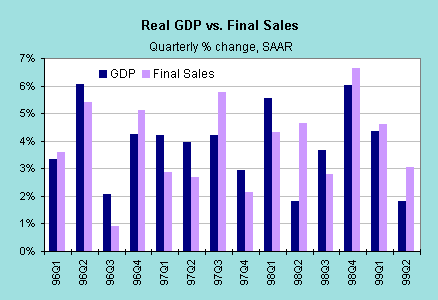
GDP measures total domestic production quarterly. Final sales reflect demand by consumers, businesses, and government. When final sales grow much faster than GDP for at least two quarters, it signals the need to rebuild inventories. That means production increases and so does GDP. For the past three quarters, inventories grew less than sales. This could portend faster production in coming months.
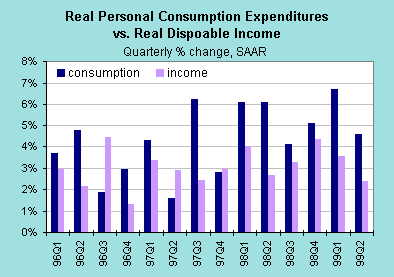
Typically, consumers increase spending in direct proportion to gains in disposable income. Since 1996, spending has outpaced income, as consumers feel wealthier from stock market gains and housing appreciation. A sharp reduction in mortgage refinancing activity coupled with greater stock market volatility may contribute to slower consumer spending in the next few months, but it still is surpassing income growth.

Debt burdens are at historically high levels at the same time that the personal savings rate stands at all time lows. This underscores the high degree of confidence in the economy and the reliance on wealth appreciation as a substitute for saving.
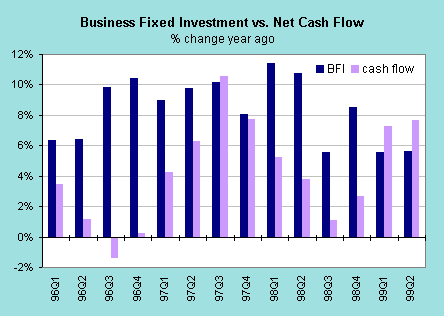
Cash flow is to business investment what income is to consumption expenditures. Business investment has grown more rapidly than cash flow since 1996. The revival in cash flow may represent a rebound in corporate earnings. This could spur investment spending again, which is favorable for the equity market.
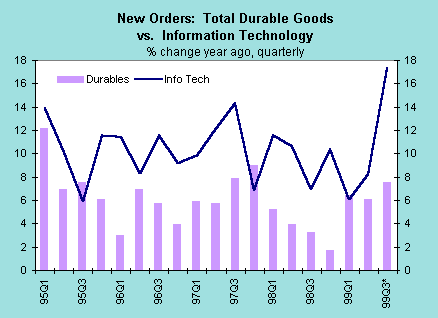
New orders for durable goods reveal demand for consumer goods such as cars and home appliances as well as investment equipment such as lathes and computers. The acceleration in new orders that began in the first quarter continued in July.

Income and interest rates are the two key factors that affect housing activity. More housing construction translates into increased demand for furniture and appliances as consumers refurnish their new homes. The rate of housing construction moderated in the second quarter, but starts picked up in July despite higher mortgage rates.

Export demand weakened considerably after the Southeast Asian debacle in October 1997. Southeast Asian economies are poised for recovery, albeit mild. It will take a while for exports to pick up steam - particularly with the strong foreign exchange value of the dollar in 1998. It appears that exports are starting to recover. The dollar has weakened slightly and this should spur export demand in coming months.
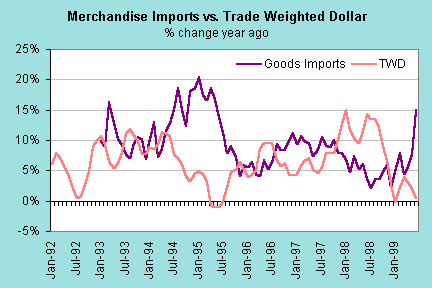
Import demand hardly ever slackens - since U.S. consumers have such a high propensity to spend on goods and services. The steady stream of imports in the past few years has helped to curtail price pressures. A weaker dollar, with a lag, could hamper import demand and take the lid off price hikes.